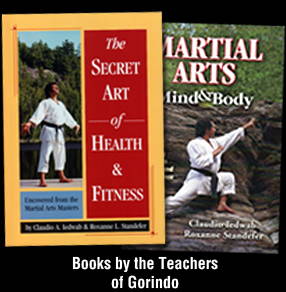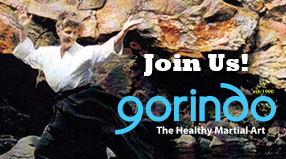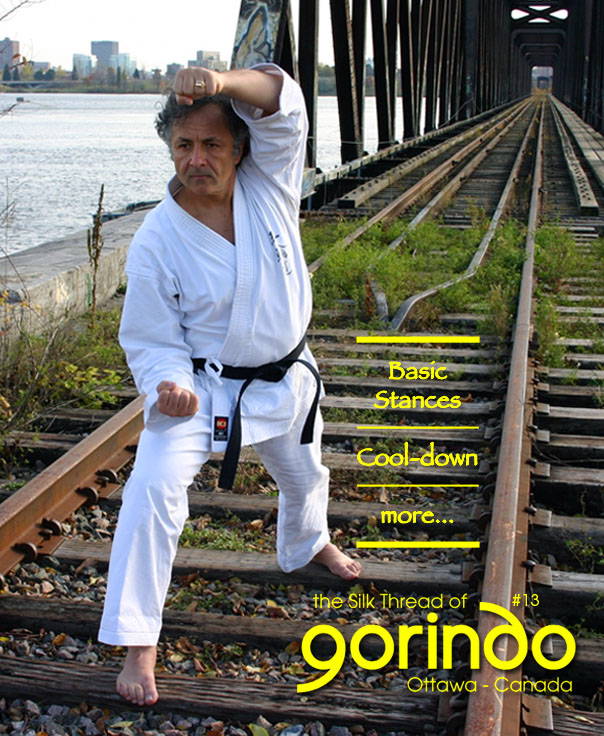
The Silk Thread of Gorindo - Ottawa - Canada
Issue 13
Photo cover Claudio Iedwab sensei, November 2011, by Roxanne Standefer
Basic Stances
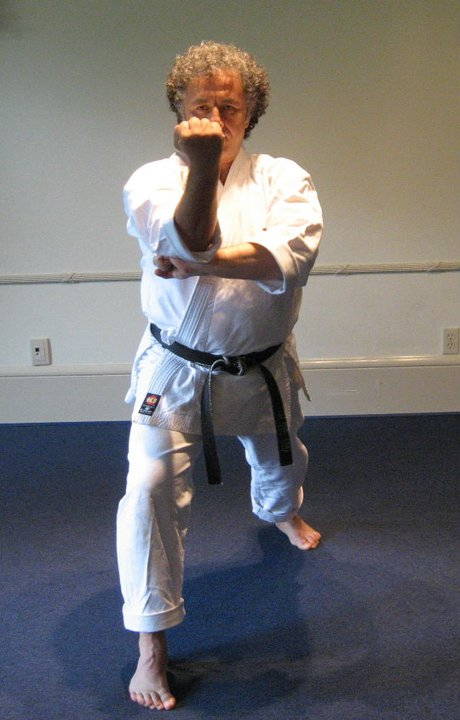
Some Advice About... Stances
➤ To execute an effective technique it is necessary to have good stance and posture. Balance, stability, as well as dynamic mobility and naturally linked techniques are the result of well constructed and relaxed stances. A strong and solid stance doesn’t mean rigid, in the same way that relaxed doesn’t mean weak.
➤ Always keep the center of gravity inside the base of support and the back straight and perpendicular to the ground, focusing the attention in the lower abdomen. Don’t put too much pressure on the lower back (pushing with your hips and leaning back with your shoulders), because this can produce hyperextension of your psoas muscles, pulling on the lumbar area of your spine and eventually damaging it.
➤ In general the musculature should not be tense all the time nor weak, it must be ready to maintain the flexibility of the technique and the harmonic movement of any part of your body without telegraphing your intentions. A relaxed posture also allows you to breathe comfortably with the expansion of the abdomen.
➤ Relax the shoulders and maintain the head erect and looking forward. The tendency when you learn a new stance is to look at the floor or to the leg positions. Make an effort to avoid this habit. Try to check and correct your stances with the mental image of your body in mind. When you ‘feel’ (inside of your self) the correct stances through practice, then they will incorporate naturally in your technique.
➤ Of course, no one stance is the ideal. All of them have good and weak points, and according to the circumstances they will be useful or not. Some stances are most adapted to speed, some to transitional movement and others are fixed and solid.
➤ A correct stance indicates the level of progress. Continued practice of basic stances is important throughout the training. Practice with both sides, right and left. Remember that Martial Art is an ambidextrous activity.
➤ In the beginning you may find a new stance awkward or uncomfortable, but with practice and perseverance it will become natural to you. Gradually giving time to the body to learn new angles, and stretching and strengthening muscles through the training will result in good technique if the correct positions are observed.
➤ Some of the stances can be modified slightly for specific training reasons, i.e., long stances develop good muscles in the leg and help to challenge speed of displacement. A deep front stance will not be very practical for walking fast, but using it in practice helps to develop the musculature and the angle of motion used in the execution of front kick, mae geri for example.
➤ Practice stances from parallel stance moving left or right foot, forward or backward, turning to the side or walking forward and backward. The basics steps or displacements for each belt are included in each kata level.
➤ Remember when you walk or turn in any direction to do it on the ball of the foot, not on the heel. Control your balance by remaining centered and low. Step lightly, grip the ground firmly, maintaining elasticity in the flex of your ankles and knees to attenuate impact during the steps. Avoid touching one foot to the other.
➤ Move smoothly but quickly in a sliding manner from one position to the next. Learning when to ‘lock-on’ to a stance or when to ‘yield and change’ is part of the advanced learning process in Martial Art. This is why constant vigilance and practice of stances never ends as you progress through the training.
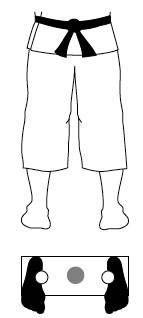
Heiko-dachi
This stance is a simple, natural and even distribution of the body weight with both feet pointing forward. They should be the same distance apart as your shoulders. Avoid locking the knees and maintain more body weight on the balls of the feet, not on the heels. Although it seems passive, the stance has an attitude of active readiness that will allow the next movement in an direct manner.
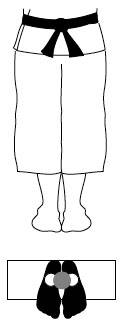
Heisoku-dachi
Both feet together pointing forward. Body weight distributed in a bigger percentage on the balls of the feet. Maintain the legs straight but avoid locking the knees.
by Claudio Iedwab & Roxanne Standefer
Originallly published in the Gorindo Student Manual and “The Secret Art of Health & Fitness – Uncovered from the Martial Arts Masters” by Claudio Iedwab & Roxanne Standefer
©2011 Photo by Roxanne Standefer / Illustrations by Claudio Iedwab
« Click the Subscribe link on the left

